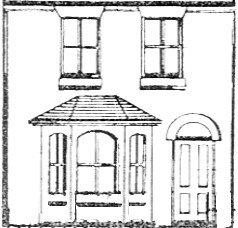Care & Repair
Kitchens

The Victorian Society Guides
v/ KITCHENS
The Victorian Society is the most authoritative source of historical information on properties of this age.
How did the Victorians decorate the walls of their kitchens?
Kitchen walls were of plain plaster, regularly whitewashed or distempered. A bag of laundry blue in the paint bucket imparted a faint blue tinge to the walls, which was said to repel flies and imparted a feeling of coolness to the room. Lower down, the walls were covered with a high dado of tongue-and-groove boarding painted with washable gloss paint, tiles or glazed brick for hard wear and hygiene.
Why were the windows in Victorian kitchens so high?
This was not in order to prevent the servants from daydreaming, or spying on their employer’s family taking the air in the garden. Open ranges generated huge amounts of heat, and so kitchens had high ceilings, with the windows set as high in the walls as possible, for the most efficient ventilation.
When did gas cookers start to be used?
Gas-fired ranges were exhibited at the Great Exhibition of 1851, and in 1868 Shrewsbury’s Portable Gas Oven came onto the market. However, prejudice, fear of explosions and health scares about eating food impregnated with harmful fumes delayed the widespread introduction of gas ovens, and they did not begin to replace solid fuel ranges in any numbers until the 1890s.
What floorcoverings were used in kitchens?
Stone slab or unglazed tiles were the norm. Wooden duckboards were used around the table, where the cook stood. Hard floors were also noisy under chairs or where there was lots of coming and going, hence a Victorian architect’s observation that ‘in small houses … when the Kitchen serves also as the Servants’-Hall, a wood floor for the whole is sometime preferred’.
What cleaning materials did the Victorians use?
Few proprietary cleaners were available, and most of the cleaning materials used in the Victorian kitchen and scullery were hard on the hands. A mixture of soda and soft soap was used for washing up. Whiting made a mild, creamy cleaner that would remove grease. Stronger abrasives such as bath brick and emery powder were used for cleaning knives and iron utensils.
Powdered limestone was mixed with rape oil to make an abrasive paste for cleaning brass and tin (known as ‘rottenstone’ or ‘tripoli’). Washing-up cloths were boiled in water to which a little vinegar had been added. Drains were disinfected with chloride of lime.
What was the purpose of the scullery?
In the Victorian period, it was universally understood that the kitchen was used only for cooking. Washing-up, scrubbing vegetables and all the messy, low-status activities that involved water were done in the scullery. Even the smallest Victorian houses had a separate scullery, and it was rare for sinks to be installed in kitchens before the twentieth century.
















